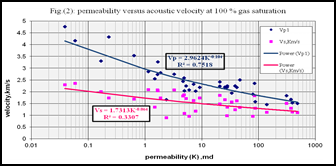
Abdel Moktader A. El Sayed
Ain Shams University, Egypt
Title: Petrophysical study of Szolnok Formation, Endrod Gas Field, Hungary
Biography
Biography: Abdel Moktader A. El Sayed
Abstract
Investigation of rock porosity and permeability is highly beneficial for geologists, petro-physicist and petroleum engineers in order to evaluate reservoir anisotropy, and its pore space geometry through the time and space. Clastic reservoir quality and classification could perform based on these data correlations. The Szolnok Formation in the great Hungarian plain is composed mainly of sandstones intercalated with marl and siltstones of delta fringe deposits. In the present study, 213 core samples were obtained from the Szolnok Formation and subjected for petrophysical investigations. Both horizontal and vertical permeability were measured with different techniques. Permeability anisotropy gives unambiguous diagnostic features for reservoir heterogeneity in case of siltstone- marl facies. The study of grain size parameters and cross-plots constructed among measured reservoir properties indicate that Szolnok Formation has two main lithologic facies: 1. Clean sandstone (represented in this study by 141 samples) and 2.siltstone- marl (represented by 72 samples). From the interpretation of measured data, it can obviously differentiate among good, intermediate and bad reservoir rocks in Szolnok Formation. Ultrasonic laboratory measurements were carried out for only 30 sandstone core samples. These samples were completely dry, while Sonic Viewer-120 instrument is used to measure seismic velocity, Poisson’s ratio and other mechanical properties such as rigidity, bulk modulus and Young’s modulus. Both Wyllie and Raymer equations were used to predict reservoir porosity in order to relate it to measured porosity. Effective pore radius is outlined from both porosity and permeability.


